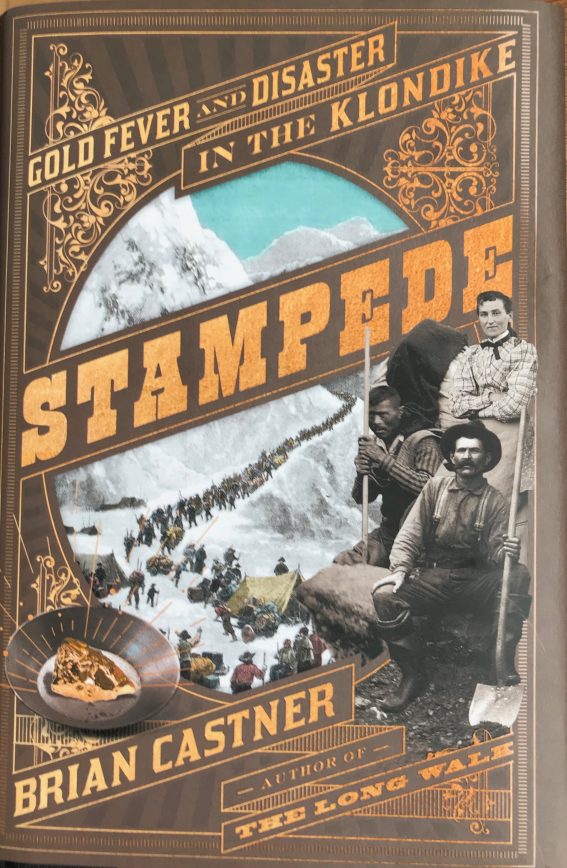Stampede
In the Summer of 1980, when I was 29 and the love of my life was studying photography in Sweden, I got a call from a law school buddy named Dave Diver. It was winter when he called. Cold and windy in Bethel where I lived. Colder in Fairbanks, where he served the U.S. Air Force as a JAG officer.
Having lived in Alaska for several years, we both believed that summer would eventually return. When it did, Dave and his wife wanted to hike the Chilkoot Trail, which starts near Skagway and ends in British Columbia. If I flew up to Fairbanks next June, he’d drive his wife and I down to Skagway, where we could start the hike.
Since I grew up listening to my dad recite poems about the Klondike Gold Rush, I had to say, “yes.” Dad had memorized “The Cremation of Sam McGee” and “The Shooting of Dan McGrew” by Robert Service and recited them until their words and images seeped into my brain.
I wish I could tell you that the Chilkoot hike with Dave enriched my knowledge of the 1898 Klondike Gold Rush. But it rained too much to let me take in the needed history lesson. By the second night on the trail, rain had soaked my tent and sleeping bag. It continued the next day. I had to carry water soaked gear up the Golden Staircase and into Canada where Dave and I found four hypothermic hikers from Chicago. After helping them recover, we spent the rest of the day getting soaked and tired.
On the train ride back to Skagway from the end of the trail at Lake Bennett, I couldn’t figure out why, eighty-six years ago, 100,000 people had made the same climb while loaded down with much more gear. Then, they floated in homemade skiffs to the gold fields near Dawson City.
I never returned to the Chilkoot trail. I might have if I had read Stampede by Brian Castner during my younger days. But it wasn’t published until this year.
Rather than fill his Yukon book with whines or overstated descriptions of country crossed, Castner wrote honestly about the people who came to the country for gold. He started with this 1895 quote from the miner Robert Henderson: “I am not fit to live among civilized men.”
If Henderson had traveled with another miner, he might not have become impaled on a sharp tree branch. “[B]ut Robert Henderson was his own man, never could find another who matched his endurance for misery, and so when he slipped while crossing an icy creek there was no one there to right him, and he fell, fell hard, and impaled himself upon the broken shards of a downed pine.” Stampede, p. 1.
By the time you’ve read the first chapter of Stampede you’ll know that Henderson was tough and a good survivor. He was also infected by gold fever. Henderson spent many frigid winter days melting snow and rocking gravel in a search for gold. While mining in the heart of winter, “[Henderson’s] world shrank in dimensions. Fire, tent, rocker, hemmed in by the hills clad in tall, snow-choaked trees…All was perfectly still, the snow and ice cracking and popping, like a dropped crystal cup.” Stampede, pp 12-13. Castner’s hard work in fashioning such rich, descriptive language carries the reader to a deeper level of understanding.
Many books about the gold rush just repeat the stories of prostitutes, swindlers, and Klondike miners. They provide the kind of satisfaction I enjoyed when listening to my dad recite these first lines of Service’s “Cremation of Sam McGee.”
“There are strange things done in the midnight sun
By the men who moil for gold;
The Arctic trails have their secret tales
That would make your blood run cold;
The Northern Lights have seen queer sights,
But the queerest they ever did see
Was that night on the marge of Lake Lebarge
I cremated Sam McGee.”
Service does a good job entertaining his readers. From page one on, Castner’s book goes farther. He helps us understand the strengths, weaknesses, and stamina of the men who moiled for gold in almost impossible conditions.

